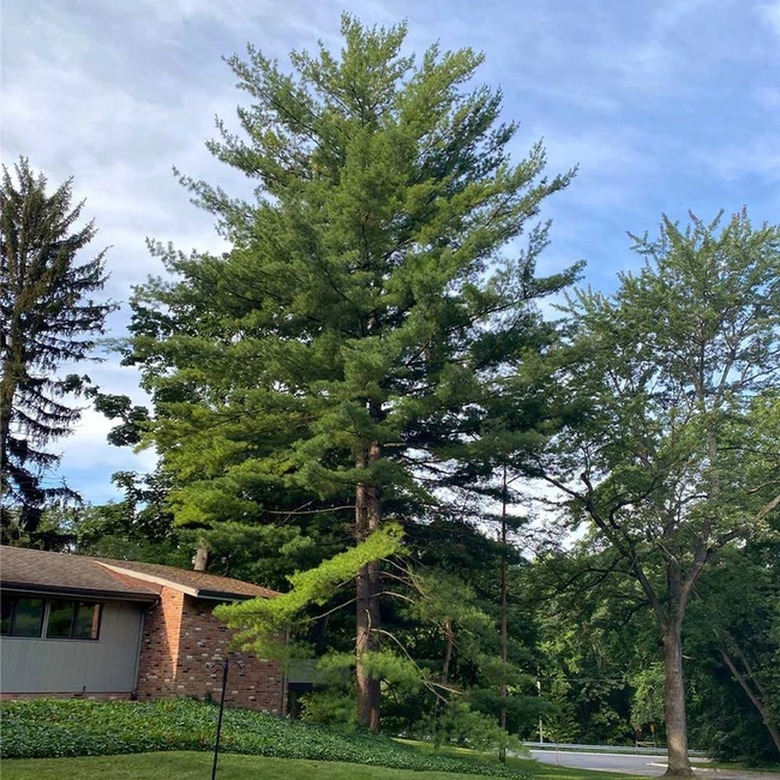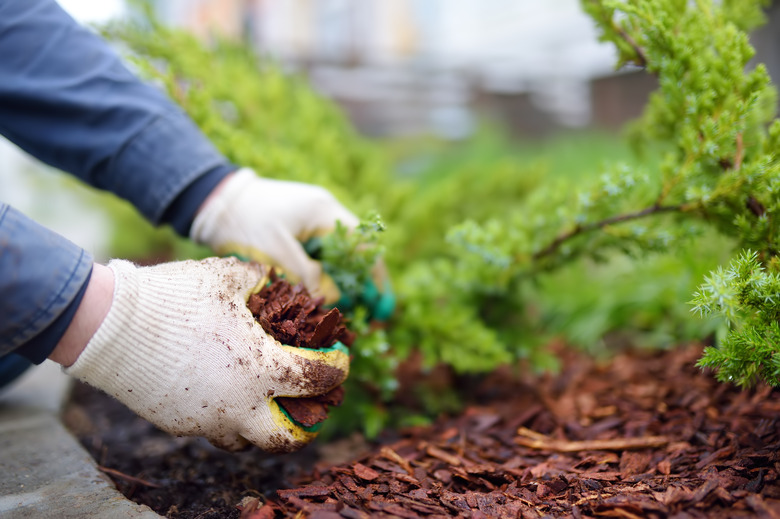How To Grow And Care For Pine Trees
Pine trees (Pinus spp.) are easy to care for and require very little work once they are established. The most important thing to consider when planting is where to plant your tree. Once you know where to grow your seedling, be sure to water your pine tree regularly and provide it with ample mulch, shade, and sun.
Plan Where You Plant
Plan Where You Plant
Once established, pine trees planted in the right area require very little care. Unfortunately, many people who don't know about proper pine tree care plant the tree where it will struggle to survive. These trees need ample sunlight and free-draining soil. To ensure your soil has enough drainage, dig a hole 1-foot deep and fill it with water. If the hole is empty 12 hours later, it is good to go. If not, you might want to choose another type of tree or another planting area for your pine tree.
It is also important to recognize that many pines can become very tall and very wide. They are not good for small spaces and cannot be used as hedges once fully grown. To avoid having to cut down your tree later, do some research on the type of pine tree you are planting to make sure it will have enough space at its full height and width. Also, be aware that the trees will drop a lot of needles, so keep them away from areas where this could cause a problem, such as patios, fireplaces and walkways.
Plant According to Seedling Type
Plant According to Seedling Type
Different seedling types will need to be planted at different times of the year and in different manners.
- Bareroot seedlings should be planted only in the dormant season (look up the right time of year for your specific pine species). Keep the roots damp but not fully immersed in water.
- Potted seedlings can be planted during the growing season, but take extra precautions if you plant in July or August to ensure they get sufficient water and shade. Check to see if the roots are circling around the inside of the container before putting them in the hole. If so, be sure to uncoil and stretch them so they can be planted straight.
- Seedlings in burlap balls or biodegradable containers should be planted during the growing season, again with proper protections for water and shade. The burlap or container can be left on the bottom and sides of the tree's rootball, but it's important to remove the burlap from around the top portion of the roots.
How to Plant a Pine Tree
How to Plant a Pine Tree
Pine trees have some pretty specific requirements for planting. Here's what you need to do to help it grow successfully:
- Dig a hole twice the size of the container or root ball, being careful to save the dirt from the hole to fill around the roots. Dig the hole deep enough that once the roots are in the hole, the rest of the tree will sit even with the surrounding soil.
- Plant the tree so it is standing straight, then fill in the soil around the roots, packing in the soil with the shovel as you go to remove air pockets.
- When the hole is half full, add water and let it fully drain before adding the rest of the soil. Then, water again.
- If necessary, use a stake to hold the tree in a stable position. Most pines, though, will not need the support.
Tip
Because baby pines are susceptible to dehydration and sunburn, you may want to install a shade screen on the west side of the seedling to protect the tree until it is established.
Mulch and Fertilizer
Mulch and Fertilizer
Mulch is critical to keeping young pines healthy. Apply mulch in a circle extending 3 feet from the tree trunk and avoid letting it touch the trunk itself. Keep mulch around your tree its entire life, if possible, as it will keep moisture in the soil. It also works as a natural weed control.
As for fertilizer, pines do not require much assistance. Do not fertilize the first year and after that, only every other year. In the absence of a soil test, which is recommended for proper fertilizer types and amounts, use 2 to 4 pounds of nitrogen per 1,000 square feet around the tree, applied only once every two to four years.
Watering Your Pine
Watering Your Pine
After transplanting, pines will need to be watered every few days. The soil should remain moist but not soggy. After a month, you can reduce watering to once a week – and only in the absence of rain. After the tree is fully established, you should only need to water during prolonged dry spells or drought.
Avoid Unnecessary Pruning
Avoid Unnecessary Pruning
Pine trees generally do not need to be pruned and will stay lush and full without much maintenance. You might occasionally need to thin the tree to allow for better airflow, to remove storm damage, to correct structural defects or prevent limbs from growing into power lines or other areas. When you do prune, you might want to work with an arborist to make sure you do not cause permanent damage to the tree.
Troubleshooting Brown Needles
Troubleshooting Brown Needles
Pine trees are fairly simple to care for. But if you see brown needles on your tree, something could be wrong. If it is fall, your tree may just be going through its annual shedding period. But if it is not fall or if the brown needles are concentrated in one area, then something needs to be done.
Lack of Sun
If your problem is lack of sun, you'll probably notice that only needles in certain areas are brown. You may want to trim nearby trees or remove other things that are blocking sunlight to your pine.
Lack of Water
Usually, pines suffering from a lack of water will let the lower branches turn brown before the rest in an effort to keep the overall plant alive. If this is your problem, try watering more or consider installing a deep root watering system.
Excess Salt
If you live in an area with yearly snow, salt being used as a de-icer may get in your soil and kill your trees. If this is the case, you might need to stop using salt on your driveway or walkways.
Fungal Disease
Fungal disease and beetles can be a common problem in pine trees. If you see these problems, cut off all affected branches if possible and spray with a fungicide or pesticide. You may want to contact an arborist to treat these problems if they affect more than a few branches because either problem could kill the tree.

